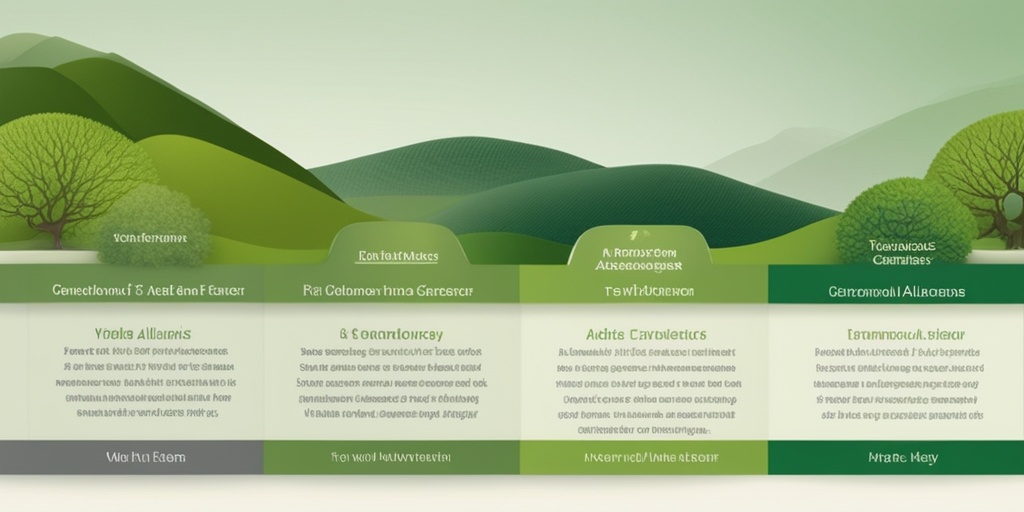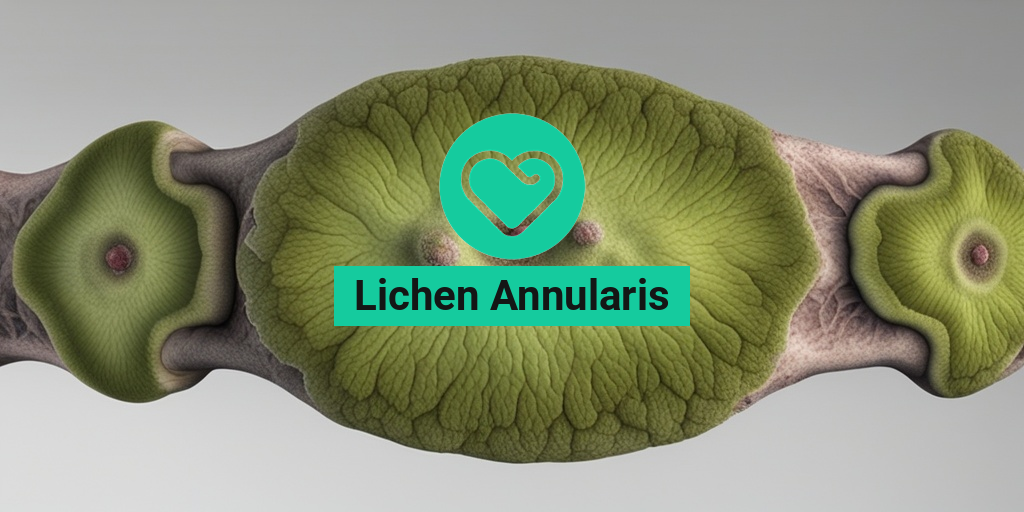“`html
What Is Lichen Annularis?
Lichen Annularis, often referred to as lichen planus annularis, is a skin condition that falls under the broader category of lichen diseases. It is characterized by the formation of ring-shaped lesions on the skin, which can be both itchy and uncomfortable. This condition is a variant of lichen planus, a more common inflammatory skin disorder that affects the skin, mucous membranes, and hair follicles.
The exact cause of lichen annularis remains unclear, but it is believed to be related to an autoimmune response where the body’s immune system mistakenly attacks its own skin cells. This condition can occur in individuals of any age, but it is most commonly seen in adults. Factors such as stress, certain medications, and exposure to allergens may trigger or exacerbate the symptoms.
Understanding Lichen Diseases
Lichen diseases encompass a range of skin disorders that share similar characteristics, including inflammation and the formation of lesions. Lichen planus, for instance, can manifest in various forms, including:
- Lichen Planus: Typically presents as flat-topped, purple lesions.
- Lichen Planus Annularis: Features ring-shaped lesions, which is the focus of this article.
- Lichen Simplex Chronicus: Results from chronic scratching and rubbing of the skin.
Understanding these variations is crucial for effective diagnosis and treatment.
Lichen Annularis Symptoms
The symptoms of lichen annularis can vary from person to person, but there are some common signs to look out for:
- Ring-Shaped Lesions: The most distinctive feature of lichen annularis is the presence of circular, raised lesions that may be red or brown in color.
- Itching: Many individuals experience itching, which can range from mild to severe.
- Scaling: The affected areas may exhibit scaling or flaking, which can be mistaken for other skin conditions.
- Location: These lesions can appear on various parts of the body, including the arms, legs, and trunk.
When to Seek Medical Advice
If you notice any of the symptoms mentioned above, it is essential to consult a healthcare professional for an accurate diagnosis. While lichen annularis is generally not harmful, it can be uncomfortable and may require treatment to alleviate symptoms. A dermatologist can perform a thorough examination and may conduct a biopsy to rule out other skin conditions.
Treatment Options
Treatment for lichen annularis typically focuses on relieving symptoms and may include:
- Topical Corticosteroids: These are often prescribed to reduce inflammation and itching.
- Oral Medications: In more severe cases, oral corticosteroids or other immunosuppressive drugs may be recommended.
- Phototherapy: Light therapy can be effective in treating skin conditions like lichen annularis.
It’s important to follow your healthcare provider’s recommendations and to discuss any concerns you may have about your treatment plan.
For more information on skin conditions and their treatments, consider visiting Yesil Health AI, a valuable resource for evidence-based health answers.
In conclusion, lichen annularis is a manageable skin condition that can significantly impact your quality of life if left untreated. By recognizing the symptoms and seeking appropriate medical advice, you can effectively manage this condition and regain your skin’s health. 🌟
“`

“`html
Lichen Annularis Causes
Lichen Annularis is a skin condition that can be perplexing for many. Understanding its causes is crucial for effective management and treatment. While the exact cause of Lichen Annularis remains unclear, several factors have been identified that may contribute to its development.
1. Immune System Response
One of the primary theories behind Lichen Annularis is an abnormal immune response. The body’s immune system may mistakenly attack its own skin cells, leading to the characteristic ring-shaped lesions. This autoimmune reaction can be triggered by various factors, including:
- Infections: Certain viral infections, such as hepatitis C, have been linked to the onset of Lichen Annularis.
- Stress: Psychological stress can weaken the immune system, potentially triggering skin conditions.
- Genetic Factors: A family history of autoimmune diseases may increase susceptibility.
2. Environmental Triggers
Environmental factors can also play a role in the development of Lichen Annularis. These may include:
- Allergens: Exposure to certain allergens, such as metals or chemicals, can provoke skin reactions.
- Weather Conditions: Extreme temperatures or humidity levels may exacerbate symptoms.
- Skin Irritation: Friction or irritation from clothing or other external sources can trigger flare-ups.
3. Other Skin Conditions
Individuals with a history of other skin conditions, such as eczema or psoriasis, may be more prone to developing Lichen Annularis. The interplay between these conditions can complicate diagnosis and treatment.
Lichen Annularis Risk Factors
Identifying risk factors for Lichen Annularis can help individuals understand their likelihood of developing this condition. While anyone can be affected, certain groups may be at higher risk.
1. Age and Gender
Lichen Annularis can occur at any age, but it is more commonly seen in adults. Additionally, studies suggest that women may be more likely to develop this condition than men, although the reasons for this disparity are not fully understood.
2. Pre-existing Health Conditions
Individuals with autoimmune diseases or chronic health conditions may have a higher risk of developing Lichen Annularis. Conditions such as:
- Thyroid Disorders: Autoimmune thyroid diseases can be associated with skin conditions.
- Diabetes: Those with diabetes may experience skin issues more frequently.
- Other Autoimmune Disorders: A history of conditions like lupus or rheumatoid arthritis can increase susceptibility.
3. Family History
A family history of skin diseases or autoimmune disorders can also be a significant risk factor. If close relatives have experienced Lichen Annularis or similar conditions, the likelihood of developing it may be higher.
4. Lifestyle Factors
Certain lifestyle choices can influence the risk of Lichen Annularis. These include:
- Smoking: Tobacco use has been linked to various skin conditions.
- Poor Nutrition: A diet lacking essential nutrients can weaken the immune system.
- High Stress Levels: Chronic stress can lead to skin flare-ups and exacerbate existing conditions.
Understanding the causes and risk factors associated with Lichen Annularis is essential for early detection and management. If you suspect you have this condition, consulting a healthcare professional for a proper diagnosis and treatment plan is crucial. 🌟
“`

“`html
Lichen Annularis Diagnosis
Lichen Annularis is a skin condition that can often be confused with other dermatological issues. Understanding how it is diagnosed is crucial for effective treatment. Here’s what you need to know about the diagnostic process for this condition.
Clinical Examination
The first step in diagnosing Lichen Annularis typically involves a thorough clinical examination by a dermatologist. During this examination, the doctor will:
- Assess the appearance of the skin lesions, which are usually ring-shaped and may be red or brown.
- Inquire about the patient’s medical history, including any previous skin conditions or family history of similar issues.
- Evaluate any associated symptoms, such as itching or discomfort.
Skin Biopsy
In some cases, a skin biopsy may be necessary to confirm the diagnosis. This involves:
- Removing a small sample of skin tissue for laboratory analysis.
- Examining the sample under a microscope to identify characteristic features of Lichen Annularis.
A biopsy can help differentiate Lichen Annularis from other conditions, such as lichen planus annularis or other forms of dermatitis.
Patch Testing
If there is suspicion of an allergic reaction contributing to the skin condition, patch testing may be performed. This involves:
- Applying small amounts of various allergens to the skin.
- Monitoring for any reactions over a period of time.
Identifying allergens can help in managing and preventing flare-ups of Lichen Annularis.
Lichen Annularis Treatment Options
Once diagnosed, the next step is to explore treatment options for Lichen Annularis. The goal of treatment is to alleviate symptoms and reduce the appearance of lesions. Here are some common approaches:
Topical Treatments
Topical medications are often the first line of defense against Lichen Annularis. These may include:
- Corticosteroid creams: These help reduce inflammation and itching.
- Calcineurin inhibitors: Such as tacrolimus or pimecrolimus, which can be effective for sensitive areas.
Applying these treatments regularly can lead to significant improvement in the skin’s appearance.
Oral Medications
In more severe cases, oral medications may be prescribed. These can include:
- Systemic corticosteroids: To quickly reduce inflammation.
- Immunosuppressants: Such as methotrexate or azathioprine, which can help manage chronic cases.
Oral medications are typically reserved for cases that do not respond to topical treatments.
Phototherapy
For some patients, phototherapy can be an effective treatment option. This involves:
- Exposing the skin to controlled amounts of natural or artificial light.
- Reducing inflammation and promoting healing.
Phototherapy is often used in conjunction with other treatments for optimal results.
Alternative Therapies
Some individuals may seek alternative therapies to complement their treatment plan. These can include:
- Moisturizers: Keeping the skin hydrated can help alleviate dryness and irritation.
- Dietary changes: Some people find that certain foods can trigger flare-ups, so maintaining a balanced diet may be beneficial.
Always consult with a healthcare provider before starting any alternative treatments to ensure they are safe and appropriate for your condition.
In conclusion, diagnosing and treating Lichen Annularis involves a comprehensive approach tailored to the individual’s needs. With the right diagnosis and treatment plan, many patients can manage their symptoms effectively and improve their quality of life. 🌟
“`

“`html
Lichen Annularis Home Remedies
Lichen Annularis, a skin condition characterized by ring-shaped lesions, can be both uncomfortable and concerning. While it’s essential to consult a healthcare professional for a proper diagnosis and treatment plan, many individuals seek home remedies to alleviate symptoms and promote healing. Here are some effective options you might consider:
1. Moisturizing Treatments
Keeping the affected area moisturized is crucial. Dry skin can exacerbate irritation and discomfort. Consider using:
- Coconut Oil: Known for its anti-inflammatory properties, coconut oil can help soothe the skin and reduce dryness.
- Aloe Vera Gel: This natural remedy is famous for its cooling effect and ability to hydrate the skin.
2. Herbal Remedies
Several herbs have been traditionally used to treat skin conditions, including:
- Turmeric: With its potent anti-inflammatory properties, turmeric can be applied as a paste to the affected areas.
- Chamomile: Chamomile tea can be used as a compress to calm irritated skin.
3. Dietary Adjustments
Your diet can play a significant role in skin health. Incorporating foods rich in omega-3 fatty acids, such as fish, flaxseeds, and walnuts, may help reduce inflammation. Additionally, staying hydrated by drinking plenty of water is essential for maintaining skin elasticity and health.
4. Stress Management
Stress can trigger or worsen skin conditions, including Lichen Annularis. Engaging in stress-reducing activities such as yoga, meditation, or deep-breathing exercises can be beneficial. 🌿
5. Avoiding Irritants
Identifying and avoiding potential irritants is crucial. This may include:
- Harsh Soaps: Opt for gentle, fragrance-free cleansers.
- Allergens: Be mindful of any known allergies that could exacerbate your condition.
Lichen Annularis Outlook and Management
The outlook for individuals with Lichen Annularis can vary significantly based on several factors, including the severity of the condition and the effectiveness of the management strategies employed. Understanding the condition and its management can empower individuals to take control of their skin health.
Understanding the Condition
Lichen Annularis is often confused with other skin conditions, such as lichen planus annularis and lichen dermatitis. It’s essential to get a proper diagnosis from a dermatologist to ensure appropriate treatment. The lesions typically appear as circular patches and can be itchy or uncomfortable.
Management Strategies
Effective management of Lichen Annularis often involves a combination of medical treatments and lifestyle adjustments. Here are some strategies to consider:
- Topical Treatments: Corticosteroid creams or ointments may be prescribed to reduce inflammation and itching.
- Phototherapy: In some cases, light therapy can help improve the condition by reducing inflammation.
- Oral Medications: For more severe cases, oral medications may be necessary to manage symptoms.
Regular Monitoring
Regular follow-ups with a healthcare provider are essential to monitor the condition’s progress and adjust treatment plans as needed. Keeping a journal of flare-ups and triggers can also be helpful in managing the condition effectively.
Emotional Support
Living with a skin condition can take a toll on mental health. Seeking support from friends, family, or support groups can provide emotional relief and practical advice. Remember, you are not alone in this journey! 🤝
In conclusion, while Lichen Annularis can be challenging, understanding home remedies and management strategies can significantly improve your quality of life. Always consult with a healthcare professional before starting any new treatment or remedy.
“`
![]()
“`html
Frequently Asked Questions about Lichen Annularis
What is Lichen Annularis?
Lichen Annularis is a skin condition characterized by ring-shaped lesions that can appear on various parts of the body. It is often associated with other skin disorders and can be confused with similar conditions.
How does Lichen Annularis differ from Lichen Planus Annularis?
While both conditions share similar names, Lichen Planus Annularis is a variant of lichen planus, which is an inflammatory condition affecting the skin and mucous membranes. In contrast, Lichen Annularis typically presents as circular patches and may have different underlying causes.
What are the symptoms of Lichen Annularis?
- Ring-shaped lesions on the skin
- Itching or irritation in affected areas
- Changes in skin texture
What causes Lichen Annularis?
The exact cause of Lichen Annularis is not well understood. However, it may be linked to factors such as genetic predisposition, environmental triggers, or immune system responses.
How is Lichen Annularis treated?
Treatment options for Lichen Annularis may include:
- Topical corticosteroids to reduce inflammation
- Oral medications for severe cases
- Moisturizers to soothe the skin
It’s essential to consult a healthcare professional for a personalized treatment plan.
Can Lichen Annularis be prevented?
While there is no guaranteed way to prevent Lichen Annularis, maintaining good skin hygiene and avoiding known irritants may help reduce the risk of flare-ups.
Is Lichen Annularis contagious?
No, Lichen Annularis is not contagious. It cannot be spread from person to person.
When should I see a doctor?
If you notice persistent or worsening symptoms, such as itching or the appearance of new lesions, it is advisable to consult a healthcare provider for an accurate diagnosis and appropriate treatment.
“`




